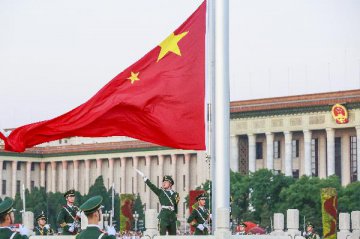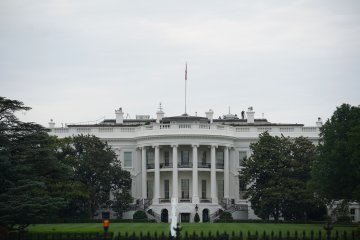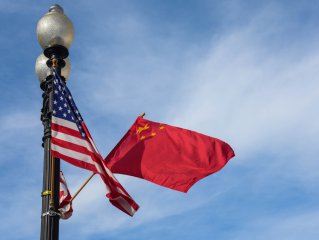
Beijing’s latest missive struck a newly measured tone, despite accusing Washington of scuttling negotiations, while Mexico sends a delegation to Washington to discuss immigration issues
China’s Vice Commerce Secretary Wang Shouwen told reporters Beijing was willing to take a “cooperative approach” to trade negotiations.
By Josh Zumbrun and Yoko Kubota
China and Mexico both signaled a willingness to negotiate with Washington over escalating trade issues, while the Trump administration took to the airwaves to defend its use of tariffs to gain concessions from trading partners.
Beijing released on Sunday a government policy paper on trade issues, accusing Washington of scuttling the negotiations, which broke down in all but name in May. It said the Trump administration’s “America First” program and use of tariffs are harming the global economy and that China wouldn’t shy away from a trade war if need be. But throughout the document and at a briefing, the government suggested a willingness to return to negotiations.
“We’re willing to adopt a cooperative approach to find a solution,” Vice Commerce Secretary Wang Shouwen said in Beijing on Sunday.
We’re willing to adopt a cooperative approach to find a solution —Wang Shouwen
Mexico, meanwhile, rushed a delegation to the U.S. to discuss immigration issues, following the Trump administration’s threat last week to impose tariffs on all Mexican goods entering the U.S. if the Mexican government fails to take aggressive measures to stem the flow of immigrants through Mexico and into the U.S.
“Mexico is sending a big delegation to talk about the Border,” President Trump wrote on Twitter on Sunday afternoon. “Problem is, they’ve been “talking” for 25 years. We want action, not talk. They could solve the Border Crisis in one day if they so desired.”
“Otherwise, our companies and jobs are coming back to the USA!” he said.
The Trump administration is aggressively using tariffs to gain concessions on two fronts. China and Mexico—the two largest sources of U.S. imports—face the possibility of hefty new tariffs in the coming weeks, with the U.S. threatening to apply an escalating 5% tariff on all Mexican imports, or about $350 billion of goods, starting June 10, while also threatening a 25% tariff on an additional $300 billion of Chinese imports that could begin later in the month.
Beijing’s modulating rhetoric over the weekend took the form of a government policy paper on trade issues. The tone, if not the substance, was markedly more measured than the sharp, at times nationalistic, rhetoric adopted by state media and some officials in the past three weeks, and Chinese trade experts said the point is to signal talks can resume, though the onus is on the U.S.
Though no talks are currently scheduled, senior U.S. and Chinese finance and trade officials are expected to attend meetings of the Group of 20 major economies during the coming weekend in Japan. A possible meeting between Mr. Trump and President Xi Jinping of China at the G-20 summit is seen by many analysts on both sides as a chance to put talks back on track.
China “is expressing its wish to work together,” said Zhang Yansheng, a researcher at the state-backed think tank China Center for International Economic Exchanges.
The White House declined to comment on Sunday.
The threatened tariffs on all Mexican imports would begin at 5% and rise by 5 percentage points each month before reaching 25% in October, unless Mexico takes satisfactory action to halt the migrants, the U.S. has said.
Several lawmakers, business groups and economists criticized the plan, saying it could potentially derail the U.S.-Mexico-Canada Agreement the three nations reached last year but haven’t yet ratified; that pact would replace the North American Free Trade Agreement. In addition, the tariffs against Mexico and China would hurt U.S. manufacturers in particular and the economy more broadly.
Two top Trump administration officials defended the president’s planned new tariffs on Mexico, saying they are needed to stem the flow of migrants into the U.S. and won’t harm the U.S. economy. Acting Homeland Security Secretary Kevin McAleenan, speaking Sunday on CNN, defended the Mexican tariffs, saying, “The bottom line for me is that we need them at the table, looking at new strategies that we can aggressively move out on.”
The Mexican Embassy in Washington didn’t respond to a request for comment on Sunday. President Andrés Manuel López Obrador of Mexico called last week for deeper dialogue on the migration issue, and said his government is doing what it can to curb the flow of migrants across Mexico without violating human rights.
Acting White House chief of staff Mick Mulvaney has said the tariffs aren’t linked to trade negotiations with Mexico. Some GOP lawmakers in Congress don’t share Mr. Mulvaney’s interpretation.
“I think it was a mistake,” Sen. John Kennedy (R., La.) said Sunday on CBS. “I’m not saying it won’t work. President López Obrador has already indicated that he’s willing to talk,” he said. “But I worry about the long-term ramifications.”
“We have a deal with Mexico on trade. It’s called Nafta,” Mr. Kennedy added. “In fact, we just shook hands on a new deal. It’s called Nafta 2. When you give your word, you stick to it.”
Meanwhile, the U.S. fulfilled promises to remove India from a privileged trading program known as the Generalized System of Preferences, or GSP, saying New Delhi had failed to “provide equitable and reasonable access to its markets.” The Coalition for GSP, an association of U.S. business groups that support the program, said kicking India out will amount to a $300 million increase in tariffs.
The stakes are perhaps highest for the U.S.-China trade talks, which were derailed after the U.S. in May accused Chinese negotiators of backsliding on an agreement. Since then, and especially since the U.S. restricted Chinese tech giant Huawei Technologies Co.’s access to American technology over national-security concerns, state media and Chinese officials started using the term “trade war”—a term Beijing had ordered off-limits.
Mr. Wang reiterated a position taken by Chinese officials, asserting that Beijing didn’t backslide in the talks because no agreement had been completed. “At the negotiating table, everything is up for discussion,’ Mr. Wang said. “Without an agreement, there can be no so-called backtracking.”
Chinese officials suggested China may bar exports of rare earths, used in high-tech products, to the U.S. They announced the creation of a blacklist for foreign companies and launched an investigation into FedEx Corp. for misdirecting packages. Meanwhile, both sides have increased the tit-for-tat punitive tariffs on each other’s goods.
The policy paper released in China over the weekend reiterated three preconditions for a trade deal: that the U.S. must remove “all additional tariffs” levied on Chinese exports, that Chinese purchases of U.S. goods to help reduce the U.S. trade deficit “should be realistic,” and that the text of a final agreement should be “balanced.”
All three issues became sore points in the talks, officials said, with the U.S. wanting to require that China change some laws and wanting to sustain some tariffs to ensure Beijing’s compliance. The Chinese side saw these demands as one-sided—something Mr. Wang referred to in his remarks on Sunday.
“Both sides need to make concessions,” said Mr. Wang, one of China’s negotiators with the U.S. “The concessions can’t all be from one side.”
Source: The Guardian






















Latest comments